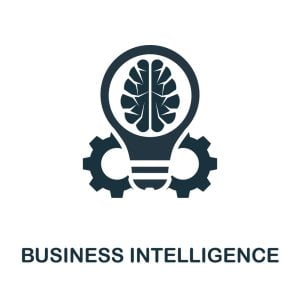Synergizing Data Management and Business Intelligence: Elevating Insights for Strategic Decision-Making
Welcome to the dynamic intersection of data management and Business Intelligence (BI), where the synergy of these two critical components propels organizations into a realm of enhanced insights and informed decision-making. In the modern landscape, the seamless integration of robust data management practices with BI tools has become imperative for unlocking the full potential of organizational data. This integration is not merely a technical endeavor; it signifies a strategic approach that prioritizes data integrity and transforms raw information into actionable intelligence. In this exploration, we delve into the symbiotic relationship between data management and BI, unraveling the keys to a holistic, data-driven approach that empowers organizations to navigate the complexities of the data landscape with precision and derive unparalleled value from their information assets.
1. Unveiling the Pillars of Data Management
In the vast landscape of data-driven decision-making, the pillars of data management stand as the bedrock upon which successful strategies are built. At its core, data management comprises fundamental principles that govern the collection, storage, processing, and utilization of information within an organization. These pillars include data quality assurance, ensuring that information is accurate and reliable; data security, safeguarding sensitive information against unauthorized access; data integration, harmonizing disparate data sources for a unified view; and metadata management, providing context and understanding to the vast data ecosystem. By fortifying these pillars, organizations establish a robust foundation for effective data governance, facilitating optimal use of information for strategic decision-making and innovation.
2. Unveiling the Core Tenets of Business Intelligence (BI)
Business Intelligence (BI) serves as the transformative engine that empowers organizations to convert raw data into meaningful insights, driving informed decision-making. At its essence, BI involves the integration of technologies, processes, and tools to gather, analyze, and visualize data, facilitating a deeper understanding of business performance. The essentials of Business Intelligence encompass a range of key components:
| Essentials of Business Intelligence (BI) | Exploration |
|---|---|
| 1. Data Warehousing | Establishing a centralized repository for diverse data sources, ensuring a unified and consistent view for analysis. |
| 2. Data Modeling and Analysis | Employing sophisticated models and analytical tools to extract valuable insights from complex datasets, identifying patterns, trends, and anomalies. |
| 3. Reporting and Dashboards | Creating intuitive, visually appealing reports and dashboards to present data-driven insights in a comprehensible manner for stakeholders at all levels. |
| 4. Data Integration | Unifying data from disparate sources, allowing for a holistic perspective and eliminating data silos that hinder comprehensive analysis. |
| 5. Data Quality Management | Ensuring the accuracy, consistency, and reliability of data by implementing robust data quality measures and cleansing processes. |
| 6. Advanced Analytics | Leveraging techniques such as predictive modeling and machine learning to forecast future trends, enabling proactive decision-making. |
| 7. Self-Service BI | Empowering users across the organization to generate their own reports and analyses, reducing dependence on IT for routine reporting needs. |
| 8. Data Governance | Implementing policies and procedures to ensure data accuracy, security, and compliance with regulatory standards, fostering a culture of responsible data usage. |
| 9. Mobile BI | Enabling access to BI tools and insights on mobile devices, facilitating real-time decision-making regardless of geographical location. |
| 10. Collaboration and Sharing | Promoting a collaborative environment where teams can share insights, annotations, and reports, fostering collective intelligence within the organization. |
| Exploration | Business Intelligence (BI) serves as the transformative engine that empowers organizations to convert raw data into meaningful insights, driving informed decision-making. The effective integration of these BI essentials equips organizations with a powerful mechanism to extract actionable intelligence from their data, thereby gaining a competitive edge and steering strategic initiatives with precision in today’s data-driven business landscape. |
The effective integration of these BI essentials equips organizations with a powerful mechanism to extract actionable intelligence from their data, thereby gaining a competitive edge and steering strategic initiatives with precision in today’s data-driven business landscape.
3. Harmonizing Forces: Exploring the Symbiotic Bond Between Data Management and Business Intelligence (BI)
In the realm of organizational empowerment through data, the intricate dance between data management and Business Intelligence (BI) unfolds as a symbiotic relationship of paramount significance. Data management lays the foundation, meticulously curating and nurturing the data ecosystem. It involves processes for data collection, storage, and quality assurance, ensuring that the raw material for insights is reliable and robust. On the other side of this alliance, Business Intelligence steps into the spotlight, utilizing the well-managed data to unveil actionable insights, trends, and patterns. BI tools, processes, and analytics transform data into a strategic asset, empowering decision-makers with the knowledge needed to drive organizational success. This symbiosis between data management and BI forms the backbone of a dynamic and responsive data strategy, where the precision of insights is directly proportional to the effectiveness of data management practices. Together, they create a powerful synergy that propels organizations into the era of data-driven excellence.
4. Exploring Challenges and Best Practices in Integration
Integration, while crucial for achieving a seamless flow of data and processes across an organization, presents a landscape fraught with challenges and opportunities. Some key challenges include:
| Challenges | Description |
|---|---|
| Data Silos | Fragmented data in separate silos hinders a unified view, causing inefficiencies. |
| Compatibility Issues | Integrating diverse technologies and systems can be complex, especially with varying compatibility. |
| Data Security and Compliance | Ensuring secure data transfer and storage during integration, compliant with regulations. |
| Scalability | The need for scalable integration solutions to accommodate increased data volumes and user demands. |
| User Adoption | Resistance to change and difficulty in adapting to new integrated systems may hinder successful implementation. |
To navigate these challenges effectively, organizations should adopt best practices:
| Best Practices | Description |
|---|---|
| Define Clear Objectives | Clearly articulate integration goals, ensuring alignment with overall business objectives. |
| Choose the Right Tools | Select integration tools based on scalability, ease of use, and compatibility with organizational needs. |
| Prioritize Data Quality | Establish and maintain high data quality standards to ensure reliable insights and decision-making. |
| Implement Robust Security Measures | Prioritize data security by encrypting data during transit and at rest, ensuring compliance with regulations. |
| Promote a Culture of Collaboration | Foster collaboration among teams to break down silos and encourage a unified approach to integration. |
| Continuous Monitoring and Improvement | Implement systems for ongoing monitoring of integrated processes, allowing for quick issue identification and resolution. |
| Invest in Training and Support | Provide comprehensive training to users and ensure adequate support to enhance user adoption and proficiency. |
5. Real-World Cases
In this paragraph we will present few real-world case studies illustrating successful integration of data management and Business Intelligence (BI):
- Netflix: Enhancing Content Recommendations with Data Integration and BI:
- Challenge: Netflix, a leading streaming service, faced the challenge of delivering personalized content recommendations to its vast user base.
- Solution: By integrating data from user interactions, viewing history, and preferences into a centralized data warehouse, Netflix employed BI tools to analyze this data. The result was highly accurate content recommendations, improving user satisfaction and engagement.
- Walmart: Optimizing Supply Chain with Integrated Data and BI:
- Challenge: Walmart, with an extensive supply chain, needed to enhance operational efficiency and inventory management.
- Solution: Walmart integrated data from various sources, including inventory systems and sales data, into a unified BI platform. This integration allowed for real-time analytics, enabling better decision-making in supply chain management and optimizing stock levels.
- Delta Airlines: Streamlining Operations with Integrated Data Insights:
- Challenge: Delta Airlines faced challenges in operational efficiency and customer experience due to fragmented data sources.
- Solution: Delta integrated data from flight operations, customer interactions, and maintenance logs into a BI system. This integration provided a comprehensive view, allowing Delta to optimize flight schedules, improve customer service, and enhance overall operational performance.
- LinkedIn: Personalizing User Experience through Integrated Data and BI:
- Challenge: LinkedIn aimed to provide a personalized user experience by delivering relevant content and connections.
- Solution: Leveraging integrated data on user profiles, interactions, and content engagement, LinkedIn employed BI tools to analyze and personalize user experiences. This integration enhanced user engagement and contributed to the platform’s growth.
- Starbucks: Leveraging Customer Data for Personalized Marketing:
- Challenge: Starbucks sought to enhance its customer engagement through targeted marketing efforts.
- Solution: Integrating customer data from loyalty programs, mobile apps, and transaction history, Starbucks utilized BI tools to analyze consumer behavior. This integration enabled Starbucks to implement personalized marketing campaigns, leading to increased customer loyalty and sales.
These case studies showcase how organizations strategically integrated data management and BI to derive actionable insights, drive operational efficiencies, and deliver personalized experiences to their users or customers. Through effective integration, these companies have harnessed the power of data to gain a competitive edge in their respective industries.
6. Anticipating Tomorrow: Evolving Trends in Data Management and Business Intelligence
Looking ahead, several transformative trends are poised to shape the landscape of data management and business intelligence. The integration of artificial intelligence and machine learning is expected to deepen, enabling advanced analytics and automation. A heightened focus on data governance and privacy compliance is anticipated as organizations strive to ensure ethical data use and regulatory adherence. The rise of edge computing is set to revolutionize real-time analytics by bringing computation closer to data sources, reducing latency. Augmented analytics, incorporating AI into BI tools, is gaining traction, making data insights more accessible through automation. Cloud-native solutions continue to dominate, offering scalability and flexibility. Natural Language Processing (NLP) is becoming integral to BI tools, allowing users to interact with data using everyday language. Blockchain technology is poised to enhance data security and integrity through decentralized and tamper-resistant ledgers. The concept of data mesh is gaining attention, promoting decentralized data ownership for better scalability. Explainable AI (XAI) is on the rise, ensuring transparency and understanding in increasingly complex AI models. Finally, continuous intelligence is emerging, integrating real-time analytics into business operations for agile decision-making in dynamic environments. As organizations navigate these trends, they position themselves to leverage data as a strategic asset for innovation and informed decision-making.
7. Conclusion
In closing, the horizon of data management and business intelligence is teeming with possibilities that beckon us into a new era of insights and innovation. As we stand at the cusp of these transformative trends, it’s not merely a technological evolution but a journey that invites us all to reimagine the way we leverage data. The fusion of artificial intelligence, edge computing, and cloud-native solutions holds the promise of reshaping how we understand and harness information. Concepts like augmented analytics and Natural Language Processing invite us to communicate with our data in more intuitive ways, breaking down barriers to understanding. The principles of data governance and privacy assurance remind us of the ethical responsibility that comes with the power of data. As we embrace these trends, we’re not just adapting to change; we’re crafting a narrative of innovation and informed decision-making. So, here’s to the future, where data isn’t just a resource but a dynamic force propelling us toward a realm of endless possibilities.






